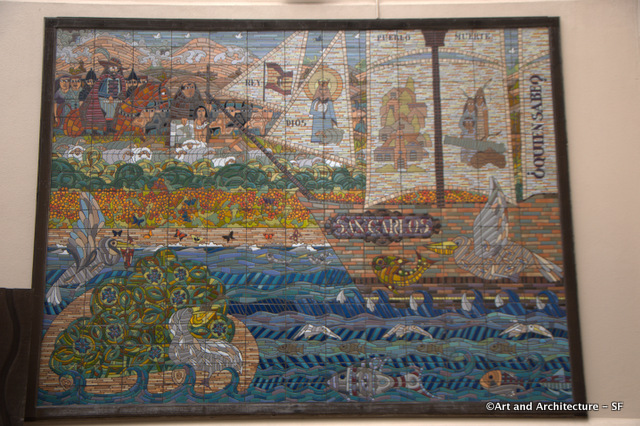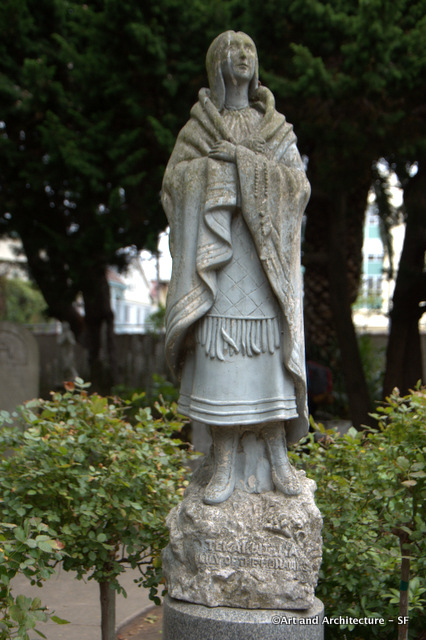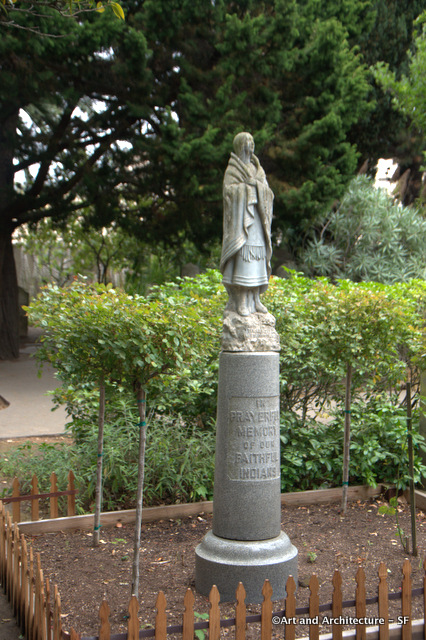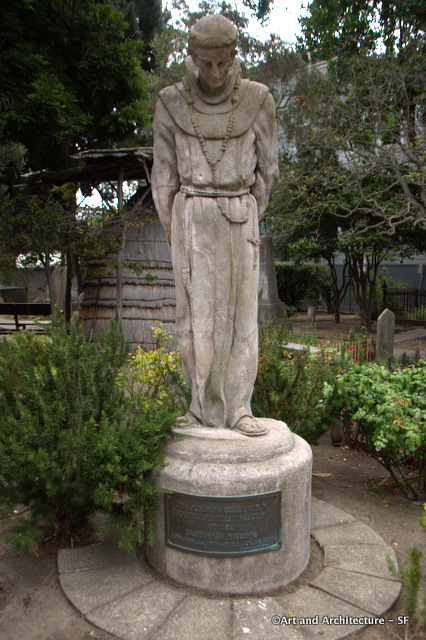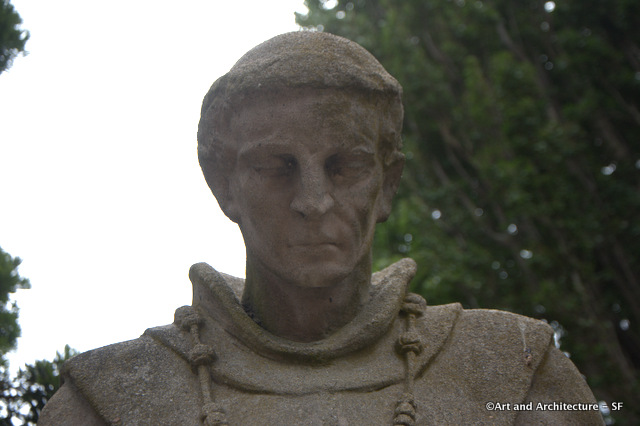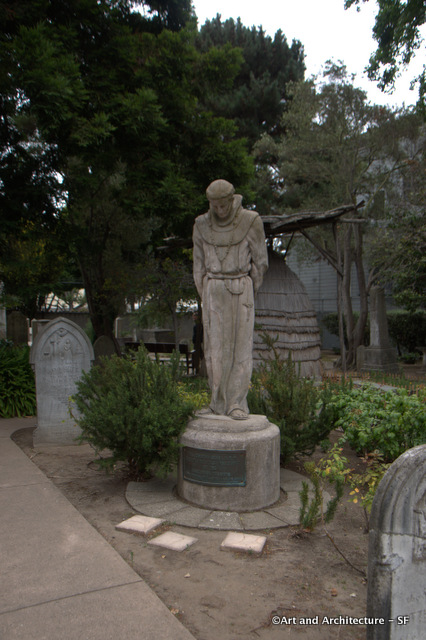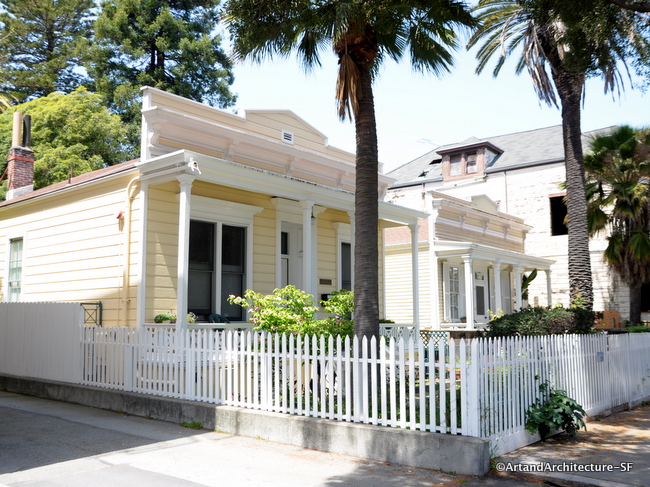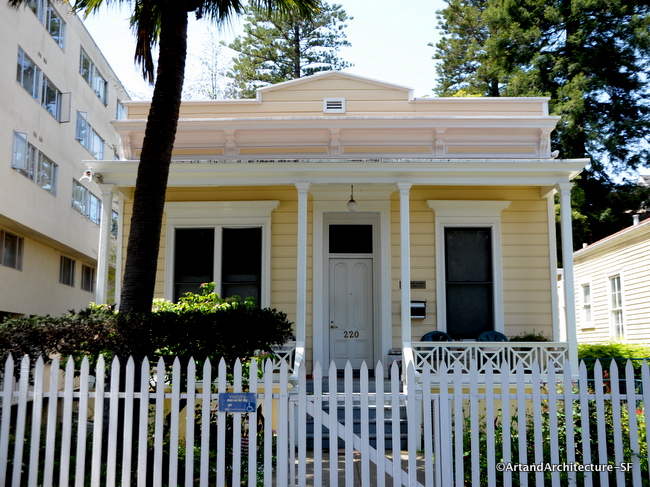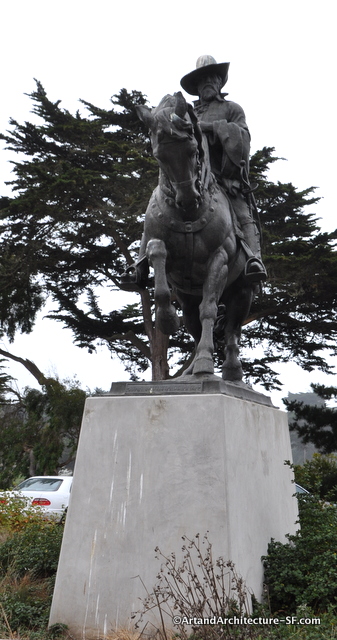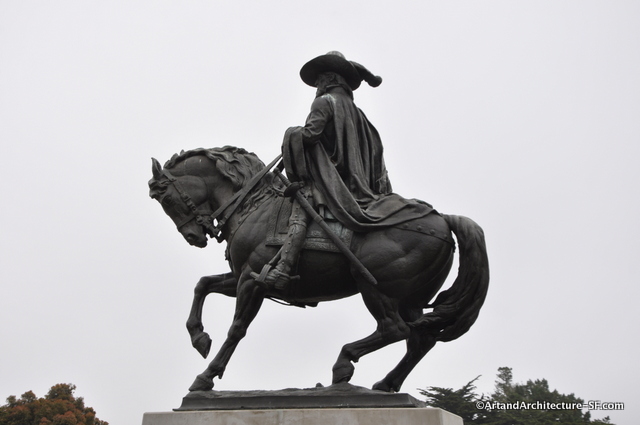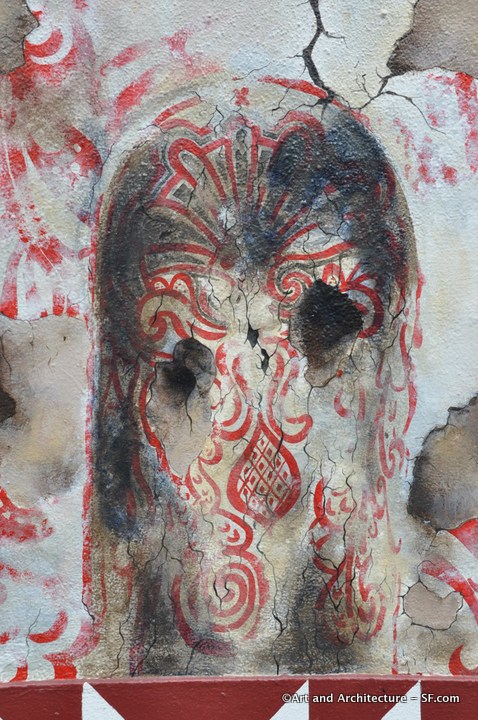Mission Dolores
16th and Dolores
The Mission District
This mural is in the hallway between the Mission and the Basilica.
The brass plaque that accompanies it reads:
Guillermo Granizo
1923-1996
This ceramic mural is the work of Guillermo Granizo a native San Francisco Artist. Shortly after Guillermo’s birth in 1923 the Granizo Family moved to Nicaragua for a period of eleven years. The family then returned to San Francisco. Extensive travel and research in Mexico and Central America in 1958 has provided flavor of many of his works.
This mural depicts the arrival of the San Carlos in San Francisco Bay while presenting at the same time the arrival of the military representative of Spain, Juan Bautista de Anza, and Father Junipero Serra to symbolize the bringing of the Good News of the Christian Chapel to the natives of California. Father Serra holds in his hand a plan for the facade of Mission Dolores.
The sails of the ship tell the story of the coming of civilization to the area. REY signifies Spanish sponsorship of the colonization: DIOS the spiritual element brought by the Franciscan Fathers: PUEBLO the city of San Francisco that was to grow out of this expedition and MUERTE to in indicated the gradual disappearance of the Naive People of this area. The artist then asks himself, QUIEN SABE? What would have happened if the civilization had not come. If the people who inherited this land had been left to themselves. He leaves the answer tot the imagination of the viewer.
The green area surrounded by brown in the lower left hand corner of the mural represents the island of Alcatraz, and the pelicans symbolize the same island in the San Francisco Bay.
We are grateful to the artist for placing this mural on extended loan to Mission Dolores since 1984.
******
Granizo was born in San Francisco and became a noted ceramic-tile muralist, who worked in bright colors, geometric shapes, heavy lines and varying textures, which gave his work a festive feeling. In the eleven years he lived in Nicaragua he absorbed influences of pre-Columbian primitive art and also styles of the Mexican muralists.
He graduated from the San Francisco College of Art, and then served as Art Director of KRON TV in San Francisco where he produced educational films. He became the resident artist for Stonelight Tiles in San Jose in 1970, and devoted the rest of his career as a ceramic tile muralist. He died in 1997.
